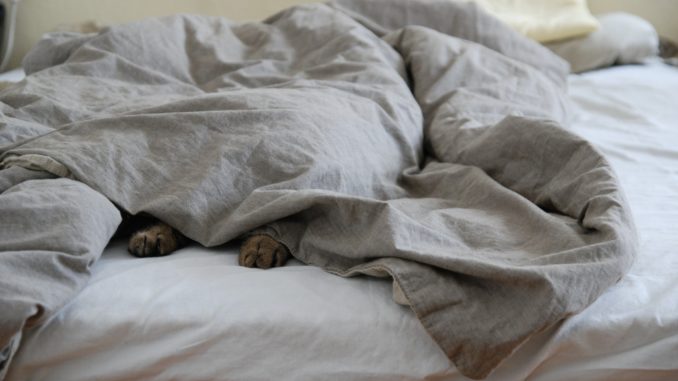
Medical team say people’s unexplained breathlessness symptoms could be blamed on bedding dust
This is an edited version of an article first published by The Guardian.
As winter approaches it might be tempting to curl up under a thick feather duvet, but experts have warned it might lead to more than just warm toes.
Doctors have reported a case of ‘feather duvet lung’ – a lung inflammation caused by breathing in dust from the feathers in bedding – and have called for medical professionals to be on the alert if patients turn up with unexplained breathlessness.
The team say the condition, a form of hypersensitivity pneumonitis, is down to an immune response. Symptoms include night sweats, a dry cough and shortness of breath – repeated exposure to the cause can cause irreversible scarring of the lungs.
“Healthcare professionals are typically taught to ask patients with respiratory symptoms whether they have pets at home, such as birds, but in the authors’ experience, history-taking does not usually extend to asking about feather exposure in duvets and pillows,” they write. “This is an important omission since the use of feather, rather than synthetic, bedding is common.”
Dr Owen Dempsey, consultant chest physician at the Aberdeen Royal Infirmary and a co-author of the report, said people should not rush to throw away their duvet and pillows, but take note if they experienced breathing problems on switching to feather bedding.
He added that while hypersensitivity pneumonitis appeared to be rare, and the report only covered one case of feather duvet lung, many cases could go unnoticed. “I suspect it is the tip of an iceberg,” he said. “I think there are lots of exposures out there that we are not aware of, and just because we are not aware of them they get ignored.”
Writing in the journal BMJ Case Reports, Dempsey and colleagues from Victoria hospital in Kirkcaldy and the Aberdeen Royal Infirmary describe how a 43-year-old non-smoking man went to his GP after experiencing three months of breathlessness, fatigue and feeling unwell.
His symptoms were put down to a lower respiratory tract infection, but after a brief improvement, worsened.
“Two months after the onset of the symptoms, I was unable to stand or walk for more than a few minutes at a time without feeling like I was going to pass out,” the patient – who was not named in the report – said. “Going upstairs to bed was a 30-minute activity as I could only manage two stairs at a time and then needed to sit and rest.”
The man’s blood test results were normal, and he was given a chest x-ray. While this was reported as normal, he was severely breathless and the GP referred him for a respiratory clinic review. Concerned by the x-ray, Dempsey delved into the man’s personal situation, and learned he had recently switched from synthetic to feather bedding.
The man was advised to ditch the bedding, check his chimney and loft for birds and make sure any mould in the house was treated.
Subsequent tests showed the man had unusually high antibodies towards particular proteins from birds – including pigeons and parrots. In addition, further scans showed a pattern in the lungs that hinted at hypersensitivity pneumonitis, while his lung function was significantly impaired.
Within a month of shedding the feather bedding, the man showed clear improvements and, with a subsequent course of steroids, felt completely well after six months.
The team say the most likely diagnosis was feather duvet lung. The condition, they say, is a rare subgroup of “bird fancier’s lung” – itself a form of hypersensitivity pneumonitis – which is caused by exposure to feathers and droppings. Other forms of hypersensitivity pneumonitis include “farmer’s lung” , “bagpiper’s lung”, “paprika slicer’s lung” and even “mummy-handler’s lung”, reflecting the wide range of activities that have been linked to breathing in substances that can cause serious lung inflammation.
“There are several hundred different types of hypersensitivity pneumonitis,” said Dempsey. “For medical professionals it is really important to be nosy and take a meticulous history and ask people about exposures because there are lots of things people do that we don’t always appreciate when we are sitting in a clinic or surgery.”
Don’t forget to follow us on Twitter, or connect with us on LinkedIn!

Be the first to comment